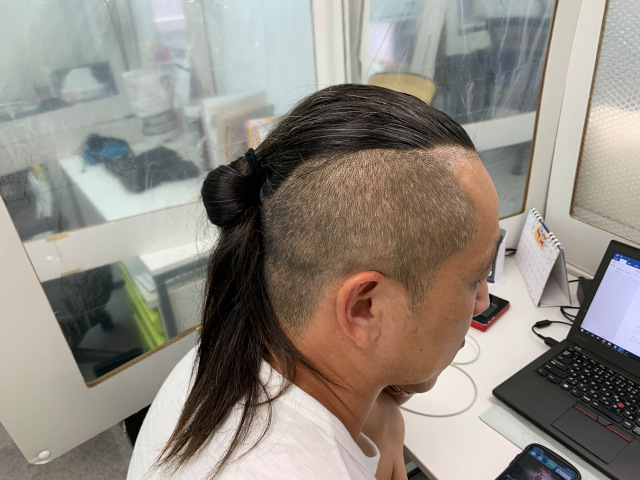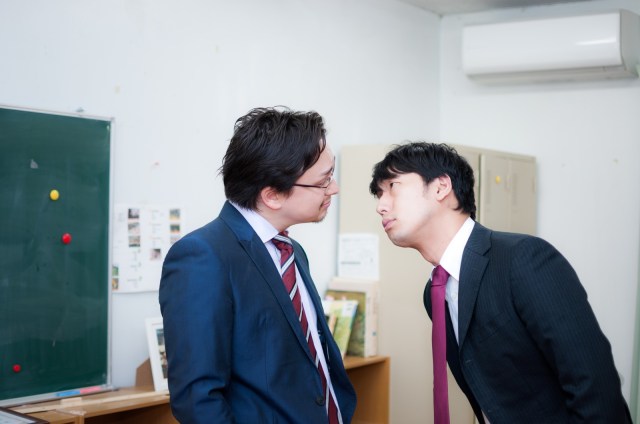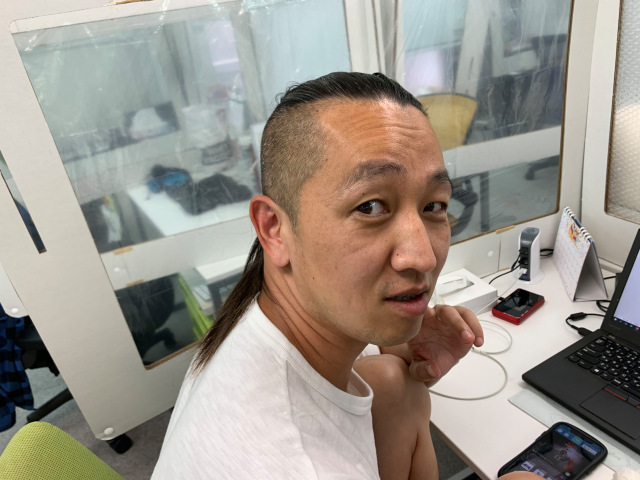
Tokyo Metropolitan Board of Education continues mental gymnastics and insists that undercuts cause harmful incidents and accidents.
School dress codes are universally reviled by students, whether it’s forbidding the exposure of one’s shoulders or even banning tights during cold, wintry months. Besides clothes, in Japan it’s not unusual for hairstyles to be strictly monitored too—no dyed hair, no hair growing past a certain length, and in the case of the Tokyo Metropolitan Board of Education, no two block hairstyles. A two block hairstyle is essentially an undercut on both sides of the head, popular among young male actors and music stars.
This week, Tokyo Metropolitan Assemblyman and Japanese Communist Party member Yuichi Ikegawa posted a video clip from a meeting in which he asked the reason for the two block hairstyle ban, but received an answer even more perplexing than the actual ban itself. In the video, which can be seen here, Ikegawa was told by Tokyo Metropolitan Board of Education head Yuji Fujita:
“In regards to the hairstyle you mention…there are cases of students being involved in incidents or getting into accidents as a result of their appearance, and so the rule is something that has been put in place with the objective of protecting the students.”
▼ Going off the Tokyo Metropolitan Board of Education’s logic, you can get into a physical fight if you have an undercut, but any other hairstyle only prompts a seething, contactless stare-off.
The term for incident in Japanese, “jiken,” has connotations of physical altercations or run-ins with the law—all things that educators understandably don’t want their students to be associated with. However, it’s a bit of a reach to say that a haircut will jump-start a fight, and so Ikegawa asked for, but never got, data showing that kids with two block hairstyles have a higher chance of getting into trouble.
An undercut itself seems harmless, but admittedly the cut is part of more flashy hairstyles such as mohawks and pompadours—both which are associated with delinquency in Japan. Though what one considers delinquent is subjective to the individual, so what better way to assess the actual realities of having this haircut than asking someone who’s had it for five years? And so our reporter Seiji Nakazawa decided it was best to ask his coworker P.K. Sanjun, who has been rocking his two block hairstyle for quite a while.

Seiji: So how long have you had this hairstyle for?
P.K.: It’s been about 5 years.
Seiji: Any reason why you decided to get a two block hairstyle?
P.K.: I guess if I have to have a reason, I thought it was a simple but pretty sick-looking hairstyle. It’s also really easy to upkeep; I only have to head to the barber once every two weeks for a 1,000-yen cut. (US$9.30) Oh, not to mention it’s pretty easy to wash too!
Seiji: I see! There’s really no inconveniences to be had if it’s a cut that can be maintained with 1,000 yen. By the way, ever encounter… say, any nasty incidents just by having this haircut?
▼ An understandable, candid raise of the brow from P.K.
P.K.: Not at all. I mean, in the past five years maybe some stuff has happened, and I’ve had run-ins, but I never really thought of my haircut as the main reason.
Seiji: Gotcha! Thanks for your time for today’s interview.
So who would’ve known? Maybe it isn’t about your physical appearance. None the less, in the Tokyo Metropolitan Assembly’s published minutes from the meeting in which Ikegawa posed his question, Fujita is quoted as saying:
“School rules have only one objective and that is to maintain community standards. Even though some schools within the city don’t have fully outlined rules, at the bare minimum there are stipulations written such as rules to wear only indoor shoes at school.
While whether or not one’s physical appearance causes one to become involved with incidents or accidents is dependent on the location, and that all students are responsible for their own interactions with fellow students, please understand we set these rules as a necessity.”
So despite Ikegawa’s sharp line of questioning and P.K.’s example of upstanding citizenship, it seems that students won’t be able to rock undercuts at public schools anytime soon. At the very least, however, let’s hope there are no other insane curveball rules such as this one school which mandated their students to participate in cult-like prostration sessions in front of teachers.
Reference: Tokyo Metropolitan Assembly
Top image: SoraNews24
Insert images: Pakutaso, SoraNews24
● Want to hear about SoraNews24’s latest articles as soon as they’re published? Follow us on Facebook and Twitter!
[ Read in Japanese ]


 Tokyo public schools will stop forcing students with non-black hair to dye it, official promises
Tokyo public schools will stop forcing students with non-black hair to dye it, official promises Japanese junior high school girl removed for class from three days for grooming her eyebrows
Japanese junior high school girl removed for class from three days for grooming her eyebrows Japanese teacher beats up student for making fun of his body by calling him anime character name
Japanese teacher beats up student for making fun of his body by calling him anime character name Famed educator says Steve Jobs, Bill Gates would have been ruined by Japanese education system
Famed educator says Steve Jobs, Bill Gates would have been ruined by Japanese education system Kyoto families angered by new policy forcing high school students to buy tablets at own expense
Kyoto families angered by new policy forcing high school students to buy tablets at own expense Red light district sushi restaurant in Tokyo shows us just how wrong we were about it
Red light district sushi restaurant in Tokyo shows us just how wrong we were about it Sandwiches fit for a sumo served up in Osaka【Taste Test】
Sandwiches fit for a sumo served up in Osaka【Taste Test】 Japanese ramen restaurants under pressure from new yen banknotes
Japanese ramen restaurants under pressure from new yen banknotes Starbucks Japan adds a Motto Frappuccino to the menu for a limited time
Starbucks Japan adds a Motto Frappuccino to the menu for a limited time McDonald’s new Happy Meals offer up cute and practical Sanrio lifestyle goods
McDonald’s new Happy Meals offer up cute and practical Sanrio lifestyle goods Akihabara pop-up shop sells goods made by Japanese prison inmates
Akihabara pop-up shop sells goods made by Japanese prison inmates Mt. Koya planning to instate visitor’s tax to cope with huge tourist numbers
Mt. Koya planning to instate visitor’s tax to cope with huge tourist numbers Anime girl English teacher Ellen-sensei becomes VTuber/VVTUber and NFT
Anime girl English teacher Ellen-sensei becomes VTuber/VVTUber and NFT French Fries Bread in Tokyo’s Shibuya becomes a hit on social media
French Fries Bread in Tokyo’s Shibuya becomes a hit on social media Pokémon Sleep camping suite and guestrooms coming to Tokyo Hyatt along with giant Snorlax burgers
Pokémon Sleep camping suite and guestrooms coming to Tokyo Hyatt along with giant Snorlax burgers All-you-can-drink Starbucks and amazing views part of Tokyo’s new 170 meter-high sky lounge
All-you-can-drink Starbucks and amazing views part of Tokyo’s new 170 meter-high sky lounge More foreign tourists than ever before in history visited Japan last month
More foreign tourists than ever before in history visited Japan last month Studio Ghibli releases new action figures featuring Nausicaä of the Valley of the Wind characters
Studio Ghibli releases new action figures featuring Nausicaä of the Valley of the Wind characters New private rooms on Tokaido Shinkansen change the way we travel from Tokyo to Kyoto
New private rooms on Tokaido Shinkansen change the way we travel from Tokyo to Kyoto Starbucks reopens at Shibuya Scramble Crossing with new look and design concept
Starbucks reopens at Shibuya Scramble Crossing with new look and design concept Studio Ghibli glasses cases let anime characters keep an eye on your spectacles
Studio Ghibli glasses cases let anime characters keep an eye on your spectacles Beautiful Ghibli sealing wax kits let you create accessories and elegant letter decorations【Pics】
Beautiful Ghibli sealing wax kits let you create accessories and elegant letter decorations【Pics】 Studio Ghibli releases Kiki’s Delivery Service chocolate cake pouches in Japan
Studio Ghibli releases Kiki’s Delivery Service chocolate cake pouches in Japan New definition of “Japanese whiskey” goes into effect to prevent fakes from fooling overseas buyers
New definition of “Japanese whiskey” goes into effect to prevent fakes from fooling overseas buyers Our Japanese reporter visits Costco in the U.S., finds super American and very Japanese things
Our Japanese reporter visits Costco in the U.S., finds super American and very Japanese things Studio Ghibli unveils Mother’s Day gift set that captures the love in My Neighbour Totoro
Studio Ghibli unveils Mother’s Day gift set that captures the love in My Neighbour Totoro New Japanese KitKat flavour stars Sanrio characters, including Hello Kitty
New Japanese KitKat flavour stars Sanrio characters, including Hello Kitty New Pokémon cakes let you eat your way through Pikachu and all the Eevee evolutions
New Pokémon cakes let you eat your way through Pikachu and all the Eevee evolutions Disney princesses get official manga makeovers for Manga Princess Cafe opening in Tokyo
Disney princesses get official manga makeovers for Manga Princess Cafe opening in Tokyo Sales of Japan’s most convenient train ticket/shopping payment cards suspended indefinitely
Sales of Japan’s most convenient train ticket/shopping payment cards suspended indefinitely Sold-out Studio Ghibli desktop humidifiers are back so Totoro can help you through the dry season
Sold-out Studio Ghibli desktop humidifiers are back so Totoro can help you through the dry season Japanese government to make first change to romanization spelling rules since the 1950s
Japanese government to make first change to romanization spelling rules since the 1950s Ghibli founders Toshio Suzuki and Hayao Miyazaki contribute to Japanese whisky Totoro label design
Ghibli founders Toshio Suzuki and Hayao Miyazaki contribute to Japanese whisky Totoro label design Doraemon found buried at sea as scene from 1993 anime becomes real life【Photos】
Doraemon found buried at sea as scene from 1993 anime becomes real life【Photos】 Tokyo’s most famous Starbucks is closed
Tokyo’s most famous Starbucks is closed One Piece characters’ nationalities revealed, but fans have mixed opinions
One Piece characters’ nationalities revealed, but fans have mixed opinions We asked a Uniqlo employee what four things we should buy and their suggestions didn’t disappoint
We asked a Uniqlo employee what four things we should buy and their suggestions didn’t disappoint Princesses, fruits, and blacksmiths: Study reveals the 30 most unusual family names in Japan
Princesses, fruits, and blacksmiths: Study reveals the 30 most unusual family names in Japan Japanese university globalizes with fall start date, governor wants English as official language
Japanese university globalizes with fall start date, governor wants English as official language Pantene ad asks why people in Japan are forced to look the same when job hunting
Pantene ad asks why people in Japan are forced to look the same when job hunting Human pyramids continue in Kobe schools as injuries mount to 51, mayor’s pleas to stop unanswered
Human pyramids continue in Kobe schools as injuries mount to 51, mayor’s pleas to stop unanswered Osaka teacher fired for posing as student and asking 200 women about their sex lives
Osaka teacher fired for posing as student and asking 200 women about their sex lives Crazy Japanese “doctor” thinks babies live in clouds, choose their mothers from the heavens
Crazy Japanese “doctor” thinks babies live in clouds, choose their mothers from the heavens Majority of Nagasaki high schools and middle schools have white-underwear-only rules, study finds
Majority of Nagasaki high schools and middle schools have white-underwear-only rules, study finds Tokyo police arrest teen for having knife 2mm too long, released because type of knife mistaken
Tokyo police arrest teen for having knife 2mm too long, released because type of knife mistaken We got a haircut at “Japan’s Leading Barber” and walked away feeling like a million bucks
We got a haircut at “Japan’s Leading Barber” and walked away feeling like a million bucks Fake schoolgirl prostitution extortion ring busted by Tokyo police
Fake schoolgirl prostitution extortion ring busted by Tokyo police Japanese middle school criticized for pulling out girls’ bra straps to check their color
Japanese middle school criticized for pulling out girls’ bra straps to check their color Tokyo police create public service warning about kids obsessing over their favorite male idols
Tokyo police create public service warning about kids obsessing over their favorite male idols Public schools in Japan’s Saga Prefecture will no longer regulate/check students’ underwear color
Public schools in Japan’s Saga Prefecture will no longer regulate/check students’ underwear color Teacher disciplined for drinking alcohol during class in Japan
Teacher disciplined for drinking alcohol during class in Japan Japanese netizens divided over new hair customization options in Pokémon RPG for Nintendo Switch
Japanese netizens divided over new hair customization options in Pokémon RPG for Nintendo Switch Is Chinese hairstylist who shaved triangle into customer’s head the best or worst in the world?
Is Chinese hairstylist who shaved triangle into customer’s head the best or worst in the world? Petition to allow students to choose what they wear to school gathers almost 19,000 signatures
Petition to allow students to choose what they wear to school gathers almost 19,000 signatures
Leave a Reply